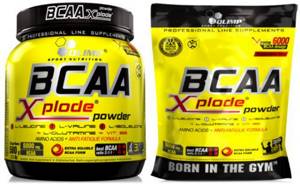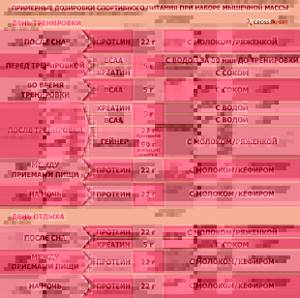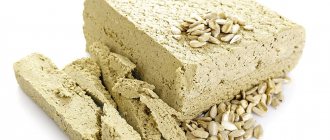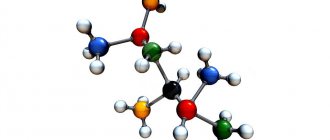Home » Recovery » Amino acids » BCAA » When to take BCAA before, during or after training?
BCAAs
In general, the method of using this amino acid complex directly depends on the goals set. For example, we take painkillers when something hurts. Taking BCAA amino acids during training is based on the same principle. Long-chain essential amino acids are actively used by the body during intense physical activity, which means they need to be taken specifically during such activity.
The most common regimen for consuming BCAAs is one in which the amino acids are taken before training and then immediately after leaving the gym. But some professional athletes also recommend taking an additional portion of BCAAs directly during training.
Can these amino acids be consumed at other times, for example, in the morning? In reality, you should not do this, although it is not prohibited. In order not to miss taking BCAAs (you can see the rating of nutritional supplements compiled by experienced athletes and specialists on the Internet), it is advisable to carry them to every workout. After changing clothes, or having done the initial warm-up, drink one dose of amino acids, therefore, after changing clothes after training, drink a second one. This technique is appropriate for BCAA capsules, the price of which is significantly higher than the powder form of the supplement. With powdered amino acids the situation is more complicated. Typically, BCAA powder is dissolved in a liquid, such as a carbohydrate drink or protein shake. But, since the taste of such an additive is bitter, it greatly spoils the taste of the drink. It is recommended to put a teaspoon (measuring) of the powder in your mouth and wash it down with liquid, mixing the two ingredients (like a mouth rinse). Thanks to this, you will hardly feel the bitterness of the supplement.
Daily requirement for BCAA
It is important to understand that BCAA (English: branched-chain amino acids, branched-chain amino acids or BCAA) is just a combination of three of the nine essential amino acids: leucine, isoleucine and valine.
BCAA are branched chain amino acids, which are an essential product because... the human body is not able to synthesize them from other elements. In an adult, their number is eight: methionine, tryptophan, lysine, phenylalanine, threonine, isoleucine, leucine and valine.
The daily requirement of a man weighing 70 kg for the three above-mentioned BCAA amino acids is about 6 grams - almost half of the body’s total need for all essential amino acids. This is what makes BCAAs so important.
When to use and in what dosages
The bodybuilder’s body on training days and on rest days, when the body is recovering, experiences a different need for fast amino acids; the regimen for taking BCAA on these days is somewhat different.
On training days
When an athlete actively trains, not only anabolic processes (muscle growth) are launched in his body, but also catabolic destructive processes. The task is to stimulate anabolic processes and inhibit catabolic ones. If anabolic processes are activated on rest days, then catabolic processes, on the contrary, are most dangerous during training. During intense exercise, the body needs additional nutrition. And if this recharge is not given from the outside, then it will begin to look for additional reserves inside the body. The first step is to use up the glycogen reserves in the liver and muscles. If there are not enough of them, the body begins to actively break down the amino acids that make up the muscles. In this case, BCAA acts as an assistant.
In order for the body not to even have the desire to start devouring itself, it needs to be given something else to “eat”. BCAA amino acids are perfect for this role!
Due to the fact that branched chain amino acids are instantly absorbed, they are actively involved in the process and not only prevent catabolism from developing during training, but also actively participate in building muscle mass and burning fat mass.
BCAAs should be taken immediately before and immediately after exercise. It would be useful to take a small amount of amino acids during training if its duration exceeds 1 hour. After training, when glucose levels are at a minimum and there are practically no amino acids left, you should immediately replenish their supply. In this case, metabolic processes, which will continue for some time at a frantic pace, will receive material for processing.
On rest days
There is an opinion that it is not necessary to take BCAAs on non-training days. This is justified by the fact that since there is no effect on the body, then there is no catabolism. And for the anabolic process, there is enough protein from your regular diet. This is wrong.
Catabolic processes are strongest immediately after sleep. If at this moment you get protein from regular food or take protein, then the body will need some time to break down the protein into amino acids. Taking BCAAs in the morning solves this problem - amino acids immediately reach the muscles.
It is recommended to take 0.5-1 of a standard serving immediately after sleep.
What are the benefits and why are BCAA needed?

The question of what BCAA are and why they are needed has been discussed on many resources and does not cause problems, but what these amino acids provide in sports, why they should be taken as a supplement, these topics still cause heated discussions. Let's start with the fact that BCA amino acids are among the three most essential supplements in bodybuilding, on par with protein and creatine. They deserve their “place” because numerous studies have proven their effect to be almost 100%, that is, all the properties that are attributed to the supplement when they find out how BCAA works are not a marketing ploy.
Branched chain amino acids have been officially proven to have the following properties:
- Protect muscles from destruction, reducing catabolism;
- Allows you to achieve the growth of lean muscle mass;
- Provide strength growth;
- Reduce the percentage of subcutaneous fat;
- Improves protein synthesis and the effectiveness of sports nutrition.
Already, based on this, we can conclude why they drink BCAA and how important this supplement is considered in the progression of any athlete. The property of improving lean muscle growth and launching fat burning processes makes BCAA an indispensable product not only during any training cycle in bodybuilding (strength work, mass gain, cutting), but also in any sport.
If we talk about a deficiency in the body of three essential amino acids, then it negatively affects not only athletic performance, but also health in general. This will lead to inhibition in the process of gaining muscle mass, a faster gain of subcutaneous fat, growing lethargy and lack of energy, etc. Especially similar “symptoms” can be observed in people who do not eat food of animal origin, which contains the most essential amino acids.
Additional source of energy during training

Constant training and physical activity deplete the body, which then needs rehabilitation; this is why BCAA amino acid complexes were developed; they do an excellent job of this task and replenish energy reserves.
BCAAs, unlike most amino acids, are metabolized (broken down) not in the liver, but in muscle tissue, which allows them to be used during long workouts as an additional source of energy and protect muscles from destruction. Consuming BCAAs during training increases the level of alanine in the blood, which in turn is converted into glucose in the liver and transported back to muscle tissue for use as an additional source of energy. Also, taking BCCA allows you to recover faster after training. With more energy, you'll be able to train longer and more intensely, and the shorter recovery time will allow you to train more often. As a result, you will experience greater muscle growth. Also, according to numerous studies, BCAAs stimulate the breakdown of fat when glycogen stores are depleted during exercise.
Who are BCAA's suitable for?
Amino acid support, and especially taking BCAA, is always useful:
- While building muscle mass.
- On drying, during relief work.
- During aerobic exercise
It is especially important for weightlifters and bodybuilders to take BCAAs. Additional amino acids have a positive effect on protein synthesis, increase energy potential and prevent muscle breakdown. Incorporating essential BCAA amino acids into your diet can significantly increase your overall body weight and protect your muscles.
Why take BCAA during training?
Any physical activity requires energy. Each cell of the body is provided with the necessary amount of energy thanks to the biological mechanism of energy homeostasis. The source of energy is glucose and fatty acids. In order to stimulate the process of energy release, the homeostasis mechanism includes growth hormone (encourages fat depots to release energy) and insulin (this hormone is important for the absorption of glucose, in turn, glucose, entering the blood, itself stimulates the production of insulin).
As soon as the level of glucose in the blood decreases, the body tries to return its level to normal and therefore begins to release energy from the reserve glucose reserve - muscle glycogen. In addition to glycogen losses, the level of essential amino acids (primarily leucine, isoleucine and valine) also decreases. Thus, the process of catabolism starts and muscle tissue is destroyed. However, if you find another, alternative source of energy for exercise, catabolism will slow down. So, for example, when taking BCAA during training, the athlete’s body actively oxidizes the amino acid leucine, which is part of the complex, adding new, no less powerful energy to the existing “glucose” energy. So, taking BCAA during training is justified as:
- source of alternative energy for the training process;
- a way to preserve muscle mass during heavy, long-term exercise (BCAA prevents muscle breakdown by slowing down catabolism).
Evidence of increased performance during training due to BCAA has not been supported by experimental medical evidence.
Innovations in the market: passive and active BCAA

If we summarize and consider all the BCAA that have existed and currently exist on the sports nutrition market, we can divide them into two types: passive and active. The first include standard BCAA, which can be found in any sports nutrition store. The composition of the supplement is almost always presented in the form of Leucine, Isoleucine and Valine, to which several additional amino acids are usually added (often the cheapest ones, for example, glycine). Of course, taking BCAA as a base, such a supplement will be effective, but today the sports nutrition industry has moved much further, which has also affected the composition of products.
For several years now, so-called “active” BCAA have been gaining increasing popularity. Basically, they are produced by various specialized laboratories that create the most effective composition. The three essential amino acids are supplemented with various central nervous system stimulants (synephrine, caffeine, taurine, etc.), nootropics (vinpocetite, noopept, etc.), and sometimes even prohormones or SAMRs, although such supplements are more intended for professionals. This approach can significantly improve the effectiveness of BCAA, improving not only the growth of lean muscle mass, but also, for example, increasing muscle rigidity. Fat burning also increases significantly, since when combined with stimulants (for example, caffeine), it is possible to achieve a synergy of all components.
Form of taking BCAA during training
Before answering this question, it is worth identifying the popular forms in which this supplement is produced:
- tablets (take time to digest);
- capsules (tasteless, quickly absorbed);
During training, BCAA's are required to be quickly absorbed. Therefore, capsules are best suited during this period. The optimal dose in one dose is from 5-6 to 10 grams of pure substance. That is why before taking it (or better yet, before purchasing), you should familiarize yourself with the composition and find out the exact specific gravity of the amino acids in the complex.

The release form of BCAA is tablets and capsules, as well as in the form of powder and liquid drinks.
It is worth consuming BCAA evenly throughout the entire workout, every 15-20 minutes. During a workout, an athlete needs to consume approximately 8 BCAA capsules (considering that one capsule contains up to 0.5 g of amino acids).
Use of amino acids by beginners
Bcaa supplementation is offered mainly to professional athletes. Selected supplements can increase the duration of strength training up to one hundred and twenty minutes. To stop the breakdown of muscle groups, long-distance runners drink seven grams of dissolved acids while running.
But this also applies to professionals, not beginners. The amino acids that make up BCAAs bring real benefits to the body, but as a separate supplement they are recommended only for bodybuilders. For a beginner, they will not play a big role in adding muscle.
How to use
BCAAs are available in powder, capsule and liquid form. Which type of amino acids to prefer is up to you.
For most athletes, it is most convenient to take BCAA in powder - this makes it easier to measure the required portion, as well as drink the prepared solution during training.
Capsules can be inconvenient because you need to take quite a lot of them throughout the day, and they sometimes come in large sizes (2-3 times larger than regular capsules). A ready-made solution of amino acids costs several times more than powdered BCAA, but if your budget for sports nutrition is unlimited, then liquid BCAA is the best option.
| own weight | 1 kg | 70kg | 100kg |
| leucine, mg | 39 | 2730 | 3900 |
| isoleucine, mg | 20 | 1400 | 2000 |
| valine, mg | 26 | 1820 | 2600 |
The standards indicated in the table are suitable for a person with average muscle volume and not involved in sports. But the more muscles you have, the more amino acids you will need to repair and grow after a workout. Recommendations for taking BCAAs for those involved in bodybuilding are as follows:
- weight up to 75 kg – up to 10 g per day
- with a weight of 75 kg or more – 10-15 g per day
The best time to take BCAAs: before, during and after training. For maximum effect, you can consume amino acids throughout the day - during breakfast, between meals, before bed - including on rest days. Taking BCCA on non-training days is especially important for those who chronically lack protein in their diet. New research into the effect of taking BCAAs on muscle growth in bodybuilding and strength sports is being conducted every day. Their results firmly establish the reputation of the BCAA complex as one of the most effective supplements for athletes. Amino acids have no contraindications or side effects; everyone can use them. Due to the opportunity
BCAAs influence both the intensity of the training process and subsequent muscle growth; this complex of amino acids is an indispensable part of the set of sports supplements that should be in the arsenal of everyone involved in bodybuilding.
Dosage and frequency of BCAA use
How to take BCAA correctly? The first and main advice is to follow the manufacturer’s recommendations indicated on the packaging, carefully study and take into account.
However, it is not always advisable to follow instructions. They are designed in such a way as to encourage you to use the drug as quickly as possible and purchase the next treasured jar. Your task is to look at the content of one serving of the product, calculate the required amount of BCAA relative to this serving, and then use the supplement in the calculated dosage. We do not recommend becoming attached to the products of any one brand - try products from manufacturers, listen to your body and choose the supplement that you “feel”.
Recommended dosage regimen
When and how much to take BCAA? The amount of the drug depends on the training schedule. The recommended dosage for BCAAs on non-training days is 10 g once daily. On training days, the supplement is taken twice: before and after training. The dosage is determined individually depending on the goal pursued and the weight of the athlete, in accordance with the portion given above. A third dose of the supplement is also allowed - directly during the training process, but not earlier than 30-40 minutes after the start of classes.
The recommendation does not depend on the gender or age of the athlete. BCAA is a supplement on its own and taking it can bring tangible benefits. However, do not forget that without a thoughtful and balanced diet and a competent training system with progressive loads, taking BCAAs will not give you anything. The exception is people with hepatitis or cirrhosis of the liver - for them, taking BCAAs will be very useful in terms of improving the health of the liver.
Combination with other additives
If you are interested in the question of whether you should drink BCAA if you drink protein or gainer, then the answer will be positive. In this way, you will ensure the growth of muscle mass with an additional amount of essential amino acids, which with a 90% probability will be used by muscle tissue and specifically for the needs of protein synthesis.
An important point is that there are protein mixtures and amino acid preparations of different compositions. Speaking of proteins, we will immediately highlight soy protein and protein synthesized from wheat - the so-called “vegetarian sports nutrition products”. Do not forget that any plant proteins are incomplete. This means that they do not contain the full range of essential amino acids and cannot provide complete protein synthesis in the trainee’s body.
Taking additional BCAAs will help fill the deficiency of required essential amino acids.
Reference. For vegetarians, the dosage of BCAAs should be increased 2-3 times to compensate for the deficiency of essential amino acids in the diet.

Features of taking liquid amino acids
Another sports supplement often used as a protein alternative is liquid bottled amino acids. We are not talking about sports drinks, but about concentrated solutions based on gelatin. This is an effective product, but with an important flaw: since gelatin is used as a matrix, the amino acid profile is formed in such a way that there is even an excess of histidine and arginine in one serving, but there is a clear deficiency of valine, leucine and isoleucine - the same BCAAs. Thus, taking BCAAs together with liquid amino acids can provide significant benefits in terms of gaining lean muscle mass and speeding up recovery after hard training.
An important point: when purchasing this sports nutritional supplement, pay attention to the ratio of acids in the preparation - leucine: isoleucine: valine. The optimal ratio would be 2:1:1.
Amino acid dosage

BCAA amino acids have an anabolic effect on muscle tissue, increase insulin production, which will further improve the absorption of all nutrients taken by muscle tissue.
Opinions differ about a single dosage of BCAAs. Many experts recommend taking between 4 and 12 grams. But people of different weights, different lengths of training, and different types of exercise performed also have different requirements for essential amino acids. For this reason, the average recommended one-time dosage of 5 grams of BCAAs is suitable for an athlete weighing 70–80 kilograms who exercises for about 30 minutes (not counting warm-up and cool-down). If you weigh no more than 80 kilograms and exercise intensely for no longer than half an hour, then take five grams of BCAAs first before training, and then immediately after it. If the duration of the training process is more than 30 minutes, then take another 5-gram portion of amino acids directly during training. If you weigh more than 80 kilograms, it is advisable to add one gram of BCAA for every two to three kilograms. Let's say for a 100-kilogram athlete the dosage of amino acids is 12 - 15 grams.
How many grams of BCAAs should you take per day?
Professional trainers advise taking 4-8 grams of amino acids at a time, both for weight loss and for gaining muscle mass. Frequency of administration: 1-3 times a day.
What is better to choose: tablets or powder?
The most common forms of BCAAs are tablets/capsules and powder.
The tablet form, at first glance, seems more convenient than the powder form. After all, the tablets can be taken at any convenient time without a shaker. In addition, pure amino acids have a bitter taste, which is not felt when taking pills.
But the maximum dose of BCAA in one tablet is no more than 1000 mg. This means that you need to drink at least 15 tablets to get 15 grams of amino acids.
The powder form is cheaper because it requires fewer manufacturing processes. At the same time, to obtain a daily dose you need to drink only 3 servings of powder. In addition, BCAA powders are often produced with various flavoring additives, and ready-made cocktails can easily replace the usual soft drinks.
Powdered amino acids or capsules?
This supplement is taken during heavy physical activity for rapid recovery, and therefore a minimum amount of time should pass from the moment of taking BCAAs to the moment they enter the blood. Imagine a gelatin capsule. Naturally, it will dissolve in the duodenum for several tens of minutes. In such a case, the meaning of taking the amino acid is nullified. And if you take BCAA in powder form, some of the amino acids will enter the stomach within a few minutes. For this reason, powdered BCAA's are much more effective during workouts than capsules. fitbreak.ru/diet/164-bcca-aminokisloti ac-t.ru/stati-i-sovetyi/scientific/bcaa-vo-vremya-trenirovki www.spartak.biz/news/bcaa-do-ili-posle-trenirovki/
How they work
BCAA amino acids are a structural component of proteins, a supplier of building materials and nutrition for muscles. Each serving of a protein shake or protein meal first goes through the process of protein oxidation, is broken down into amino acids, and only then is transported to the muscle fibers. Literally: amino acids, coming from food, on the way to the muscles are processed in the liver before getting to where they are needed, that is, into the muscles.
The value of BCAA amino acids is that the body does not need to waste time on their absorption. Free amino acids are quickly absorbed in the stomach and enter the blood, and then transported to the muscles.











